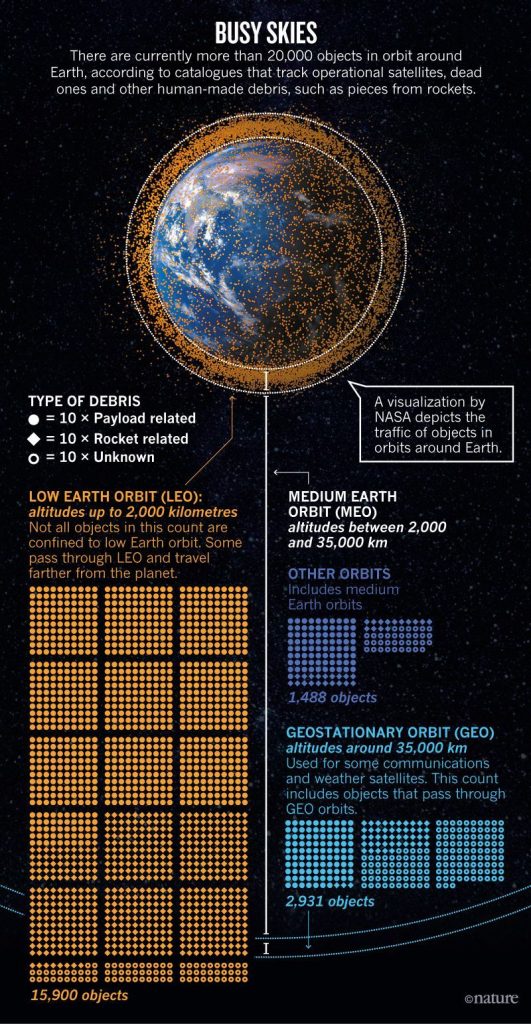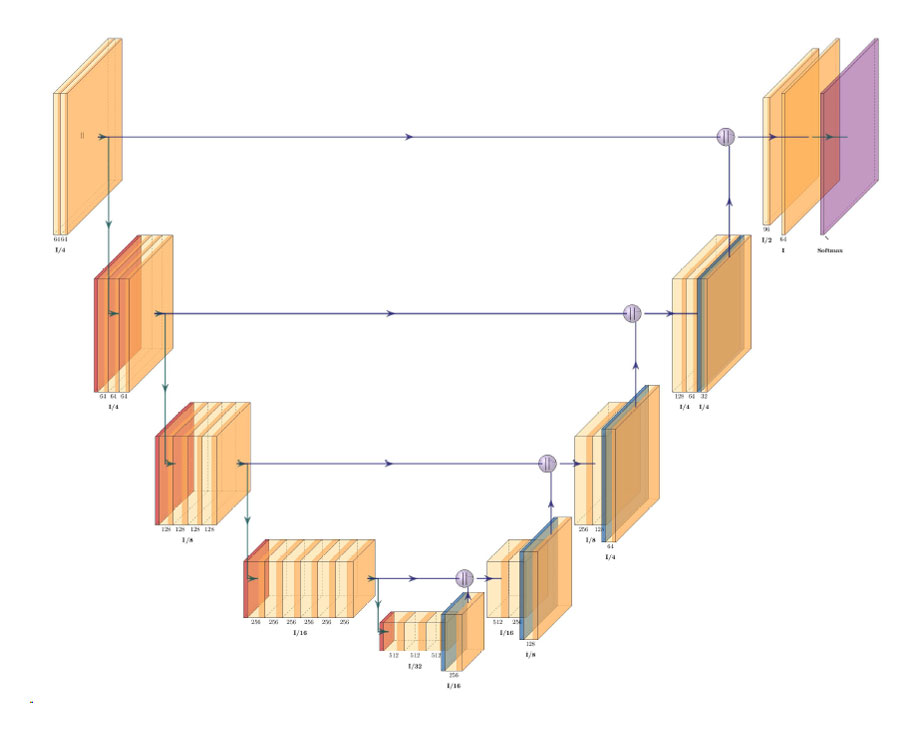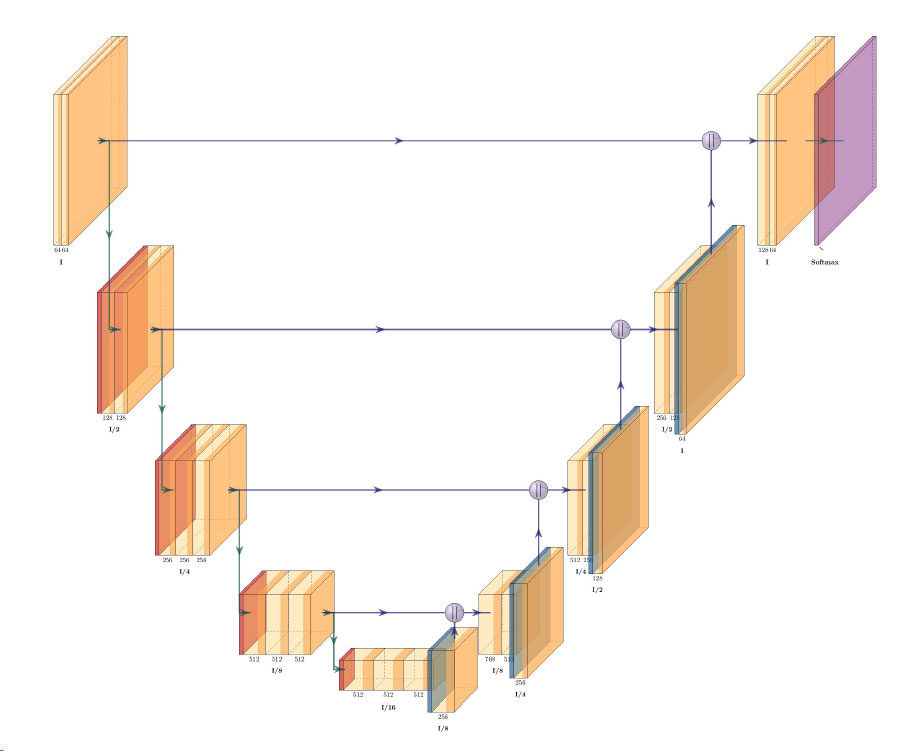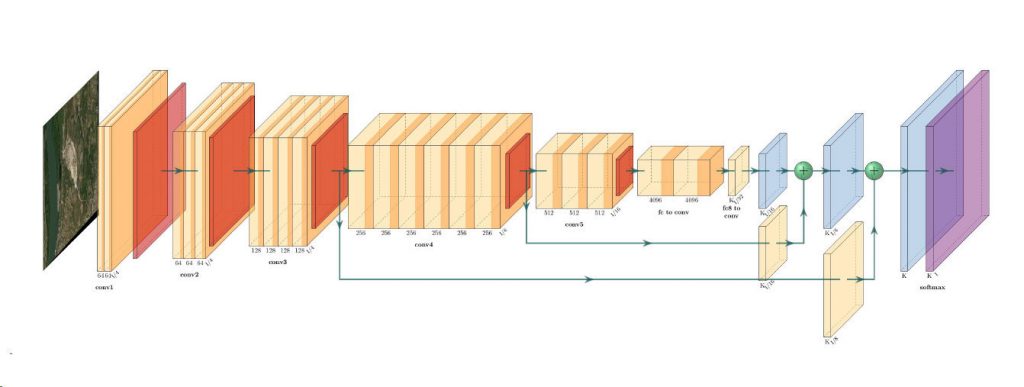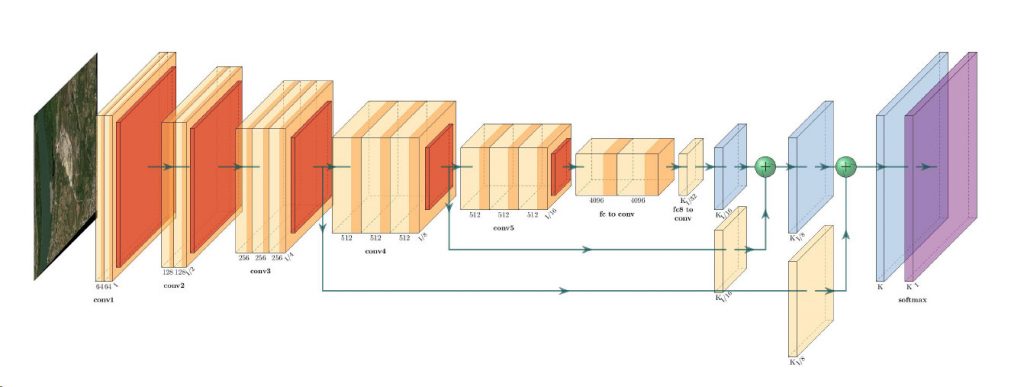The Lifespan of Orbiting Satellites
- Skye Boag, Marketing Manager at European Space Imaging
- 11 March, 2019
European Space Imaging provides a brief overview of what happens to orbiting satellites when they are decommissioned and no longer usable.
According to the Index of Objects Launched into Outer Space, maintained by the United Nations Office for Outer Space Affairs (UNOOSA) there were 4,987 satellites orbiting the planet at the start of the year, an increase of 2.68% compared to 2018. However of this number only 1,957 are currently active indicating that there is a lot of flying metal out there in space. In addition to all of these satellites, there are thousands of uncontrolled rocket bodies orbiting earth, along with more than 20,000 artificial objects floating around.
Whilst we understand the benefits of actively orbiting satellites, what about those that are no longer usable? Where do these satellites go when they die? These days there are two choices, depending on how high the satellite is. For smaller satellites closer to the Earth, engineers will use the last remaining fuel of the satellite to slow it down resulting in the satellite falling out of orbit and being burned up in the atmosphere. For larger satellites that orbit higher in space, the only option is to change the velocity of the object to send it further away. The reason for this is to more efficiently use the fuel of the satellite. It takes a tremendous amount of fuel to slow down the orbiting speed of a satellite so that it falls back into the atmosphere. For satellites orbiting high in space, it uses less fuel to blast the object further into space and therefore us a more effective means of disposal.
Spacecraft “cemeteries”
Disposing of smaller satellites in low earth orbit (LEO) is relatively simple. The heat from the friction of the air burns up the satellite as it falls closer towards Earth essentially incinerating the object into thin air. However, the process is not so simple for larger satellites in low orbit. It is impossible for these objects to completely disperse which imposes the risk of the satellite reaching the Earth’s surface potentially causing harm to the surrounding population. To avoid this, the satellites are brought down near the point of oceanic inaccessibility in the Pacific Ocean known as Point Nemo. This watery graveyard is literally the farthest place one can find from any human civilisation and is thought to house 250 – 300 spacecrafts.
Graveyard orbits
For larger satellites in geostationary orbit (GEO), it is far more effective to blast these objects far away into what is known as the “graveyard orbit” – more than 300 kilometres above the operational geostationary orbit. This imposes no threat to human population however it does contribute to “space junk”. Getting old spacecraft out of orbit is key to preventing the formation of space junk, and many space agencies and corporations now build spacecraft with systems to de-orbit them (and land them in the spacecraft cemetery).
Space clean up
Looking to the future, no nation yet has a concrete plan for clearing space junk. The Swiss Space Centre is currently developing a “janitorial satellite” called CleanSpace One to test technologies to engage, capture and deorbit end of life satellites and space junk. While a British satellite developed by the University of Surrey, RemoveDEBRIS, has successfully launched into space with the aim to test differing methods of removing space junk from orbit. The satellite has had success capturing space debris using a harpoon to spear objects and a deployable net to capture the debris. Furthermore, scientists are also tacking the problem of space junk by trying to understand where all the debris is to a high degree of precision. This field is called space-traffic management because of its similarities to managing traffic on the roads or in the air.
Source: ESA Annual Space Environment Report
Related Stories
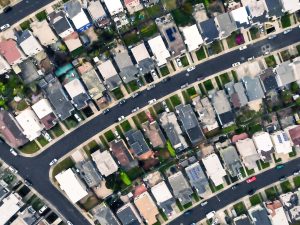
EUSI and Albedo Partner to Deliver 10 cm Resolution Satellite Imagery to Europe
It is our pleasure to announce the partnership with Albedo, a builder of high-performance spacecraft and the first satellite designed to operate commercially in VLEO (Very Low Earth Orbit). This partnership will bring the world’s highest resolution satellite imagery to the European and North African market.

Updating the Land Parcel Identification Systems in 2025: The Benefits of Using Satellite Images
Agricultural paying agencies across Europe face increasing challenges in maintaining accurate and up-to-date Land Parcel Identification Systems (LPIS), ensuring compliance with the Common Agricultural Policy (CAP) and supporting sustainable agricultural practices.

EUSI Confirms Uninterrupted Satellite Imagery Support for Ukraine and European Security
With the successful launch of Maxar Intelligence’s second set of WorldView Legion satellites, European Space Imaging (EUSI) will soon offer up to eight daily collection opportunities in key latitudes across Europe and North Africa – a number that will increase after the final WorldView Legion satellites are launched and all six satellites are operational.

Civil Mapping: Three Case Studies From Germany
Three land-surveying authorities finished large-scale mapping projects using very high resolution satellite images in 2024. These are the challenges, solutions and results:

